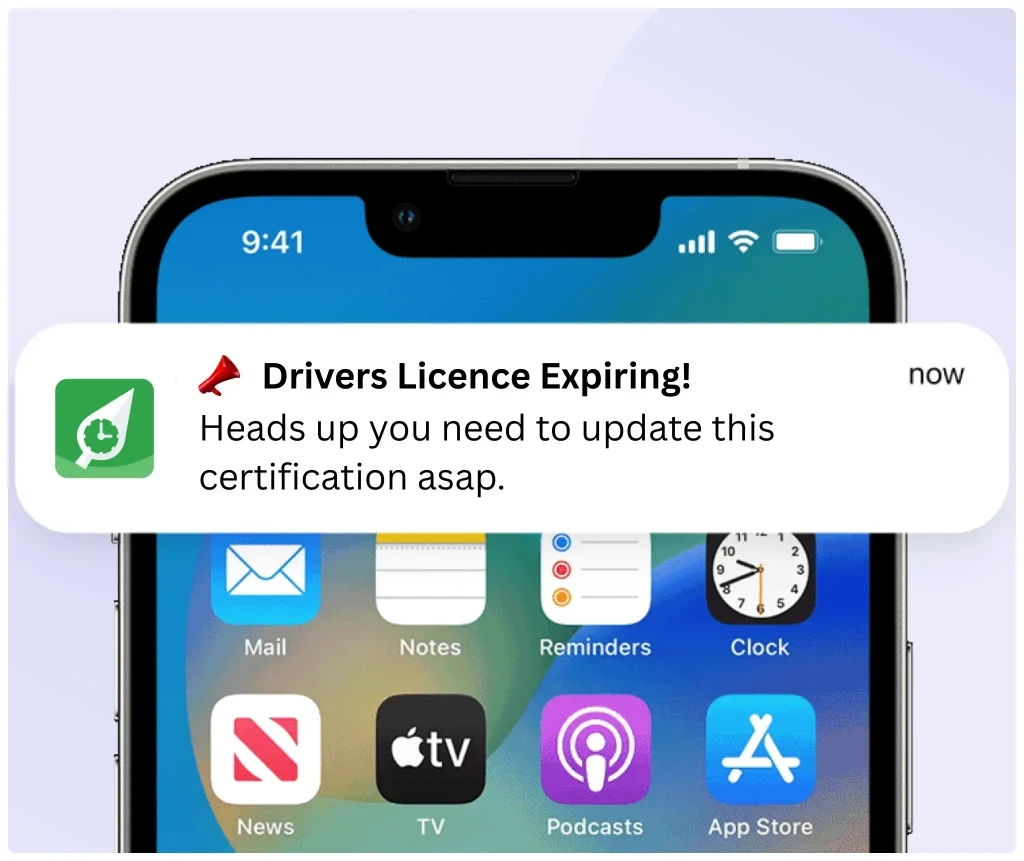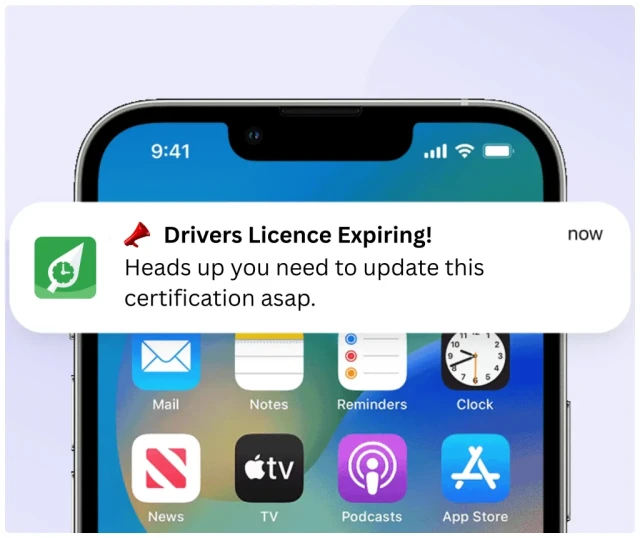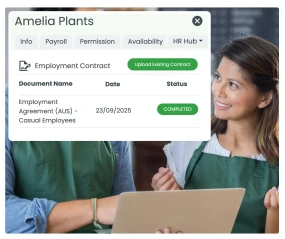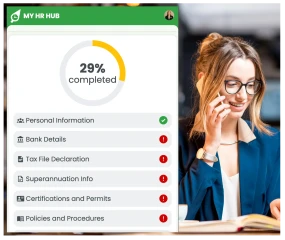Featured summary: why licence tracking matters

You need a clear, central system to track employee licences, permits and certifications—what each role requires, who holds them, expiry dates and evidence. Digital tracking sends reminders, stores proof securely and links to rostering so only qualified staff are scheduled. That’s how you avoid fines, lost shifts and safety risks while staying compliant.
Introduction — Australia’s licence landscape (the business case)
Spreadsheets and shared drives make it hard to prove compliance. Documents go missing, reminders aren’t set, and managers discover an expired card only when a shift is about to start. In a regulated environment, that gap can trigger penalties, void insurance, introduce safety risks, and erode client trust.
- Operational risk: unlicensed staff cannot legally perform certain tasks (e.g., serving alcohol or operating forklifts).
- Financial risk: potential fines, disruptions to operations and re-training costs.
- Contract risk: clients and regulators increasingly require documented evidence of current licences and workplace permits.
- People risk: safety incidents and reduced confidence among teams and customers.
Tracking licences well means you can roster appropriately, demonstrate due diligence and stay audit-ready — without overloading managers.
Connect compliance with operations using smart rostering tools — time & attendance tracking.
Legal frameworks at a glance (Australia)
While licensing rules are often state/territory-based, three national bodies shape your approach:
- Safe Work Australia: provides national WHS policy and model laws that jurisdictions adopt or adapt. Use it to understand risk management principles you should mirror in your internal licence controls. safeworkaustralia.gov.au
- Fair Work Ombudsman (FWO): outlines employer record-keeping obligations and good practice for retaining employment records that relate to qualifications and training. fairwork.gov.au
- Australian Skills Quality Authority (ASQA): sets national standards for vocational education and training providers; helpful when verifying the legitimacy of certain qualifications and refresher courses. asqa.gov.au
Tip: Always check the relevant state or territory regulator (e.g., liquor, construction, child-related work, healthcare boards) for local nuances such as course codes, renewal cycles and recognition of prior learning.
Connect compliance with operations using smart rostering tools — time & attendance tracking.
Industry checklist — Hospitality & Tourism
Typical documents for customer-facing and venue roles (requirements vary by state/territory):
- Responsible Service of Alcohol (RSA)
- Food Safety Supervisor and/or Food Handling certificates
- Responsible Conduct of Gambling (RCG) where gaming is offered
- First Aid and CPR (venue or remote/tour roles)
- Liquor Licence Manager’s Approval / Nominee (where applicable)
- Driver’s Licence for delivery/shuttle duties
Checklist actions: capture credential type, ID/issuer, issue date, expiry date, evidence (PDF/photo), role(s) covered, and any supervisory conditions.
Connect compliance with operations using smart rostering tools — time & attendance tracking.
Industry checklist — Construction & Trades
Typical documents for site-based work (confirm local rules):
- White Card (Construction Induction Training)
- High Risk Work Licences (e.g., forklift, dogging/rigging, scaffolding, cranes, pressure equipment)
- Working at Heights and Confined Spaces certifications
- Asbestos Awareness and (if required) removalist/supervisor licences
- Trade licences/registrations (e.g., electrical, plumbing)
- First Aid and CPR
Checklist actions: log site/contract references, permissible tasks, supervision requirements, and medical/fitness where mandated by the principal contractor.
Connect compliance with operations using smart rostering tools — time & attendance tracking.
Industry checklist — Retail, Warehousing & Services
Typical documents for store, warehouse and mobile roles:
- Forklift Licence (LF/LO) where applicable
- Manual Handling training
- First Aid and CPR for designated first aiders
- Driver’s Licence and clean driving record (delivery/courier roles)
- Security/Crowd Control licences (if applicable)
Checklist actions: track vehicle class limitations, shift/site restrictions, and renewal windows aligned to roster cycles.
Connect compliance with operations using smart rostering tools — time & attendance tracking.
Industry checklist — Healthcare, Aged Care & Childcare
Typical documents for regulated care settings:
- Current professional registration (e.g., AHPRA for regulated health professions)
- Working With Children Check (WWCC) or equivalent in your jurisdiction
- National Police Check (recency often specified by provider/contract)
- First Aid, CPR and Infection Control training (appropriate to setting)
- Immunisation records/evidence required by policy or law
Checklist actions: record registration numbers, scope-of-practice conditions, supervising practitioner (if applicable), and vaccination declaration process.
Connect compliance with operations using smart rostering tools — time & attendance tracking.
Build your licence compliance checklist — 6 steps
- Map roles and risks: list every role in each location and the tasks they perform; link each task to the licence/permit/certification that legally or safely enables it.
- Define evidence standards: specify acceptable proof (card number + photo, PDF certificate, registry screenshot), verification method (issuer lookup, sighted by manager) and retention period.
- Create a central register: capture employee, role(s), credential type, ID/issuer, issue/expiry dates, verification status, reviewer, notes and attachments.
- Set renewal windows: configure reminders at 90/60/30 days pre-expiry (longer for training that books out) and escalation rules to managers and rostering admins.
- Build audit trails: record who verified what, when; keep immutable logs of changes and a single source of truth for auditors.
- Report by site/role: run monthly reports on upcoming expiries, missing documents and non-rosterable staff; share summaries with site leaders.
Outcome: a simple, repeatable system that stands up to audits and supports safe scheduling decisions.
Connect compliance with operations using smart rostering tools — time & attendance tracking.
Automate expiry alerts and reporting
Manual calendars and ad hoc reminders eventually fail. Modern platforms remove the guesswork by notifying employees and managers before licences lapse, flagging gaps before a shift starts, and generating audit-ready reports by location and role.
- Smart reminders (email/SMS) at configurable intervals
- Real-time dashboards highlighting non-compliance
- Filters by site, department, role or credential type
- Exportable reports and immutable activity logs
Automate expiry alerts and reporting with RosterElf’s Licence & Certification Management to reduce manual follow-up and keep rosters compliant.
Connect compliance with operations using smart rostering tools — time & attendance tracking.
How certificate tracking software works (in practice)
Here’s what great certificate tracking software Australia users look for:
- Employee profiles: a single record per person with required credentials by role and location, status (valid/expiring/expired) and attached evidence.
- Employee self-service: staff upload new certificates via mobile, with approval workflows before they’re cleared to work certain tasks.
- Custom rules: per-role and per-site requirements, including conditional rules (e.g., bar staff need RSA; venue managers also need RCG).
- Verification notes: who validated the credential and how (e.g., registry check, sighted original), plus a timestamped log.
- Audit-ready exports: quickly produce the register and activity history for regulators, clients or insurers.
Use a centralised licence and certification management dashboard for real-time status, self-service uploads and audit-ready logs across every site.
Connect compliance with operations using smart rostering tools — time & attendance tracking.
Implementation plan — pilot, SOPs and scale
Rolling out licence tracking is a process change. Keep it simple and measurable:
Pilot (2–4 weeks)
- Choose one site or department with varied roles.
- Migrate existing documents and complete a gap analysis.
- Turn on reminders; test escalation and reporting.
- Collect feedback from managers and staff; refine SOPs.
Standard operating procedures (SOPs)
- Onboarding: required credentials listed in the offer/onboarding pack; evidence collected before first shift.
- Verification: nominated approver validates evidence, records method (e.g., issuer check), and marks status as verified.
- Renewals: system sends reminders; manager follows up; staff upload replacements; approver re-verifies.
- Rostering controls: non-compliant staff cannot be rostered to restricted tasks until verified.
Scale
- Roll out site-by-site; designate compliance champions.
- Monthly review: expiries, missing docs, exceptions and corrective actions.
- Quarterly audit: sample verifications, policy updates, training refreshers.
As you go live, standardise your process inside RosterElf’s licence and certification module to keep checks consistent across sites and reduce administrative overhead.
Connect compliance with operations using smart rostering tools — time & attendance tracking.
Master compliance checklist — print & share
Use this summary to confirm your system is complete:
- ☑ Role mapping: every role has a defined list of required licences/permits/certifications.
- ☑ Evidence standards: clear rules on what proof is accepted and how it’s verified.
- ☑ Central register: single source of truth with attachments, verification notes and audit logs.
- ☑ Expiry controls: 90/60/30-day reminders to staff and managers; escalation for overdue items.
- ☑ Rostering guardrails: prevent scheduling into tasks that require a credential unless verified.
- ☑ Reporting: monthly site/role reports on upcoming expiries and gaps.
- ☑ Training: managers trained on SOPs; new staff briefed during onboarding.
- ☑ Review cadence: monthly checks and quarterly audits with documented follow-up.
- ☑ Privacy & retention: access controls in place; records retained per policy and law.
- ☑ Continuous improvement: lessons from incidents/audits feed into updated requirements and training.
Next step: If you’re still juggling spreadsheets, move to automated tracking and reporting to stay audit-ready and keep people safe.
Connect compliance with operations using smart rostering tools — time & attendance tracking.
About Steve Harris
Steve Harris is a workforce management specialist and content contributor at RosterElf. With years of experience helping businesses streamline staff scheduling, recruitment, and compliance, Steve writes about practical HR strategies that save time and reduce stress for employers.
Connect compliance with operations using smart rostering tools — time & attendance tracking.



